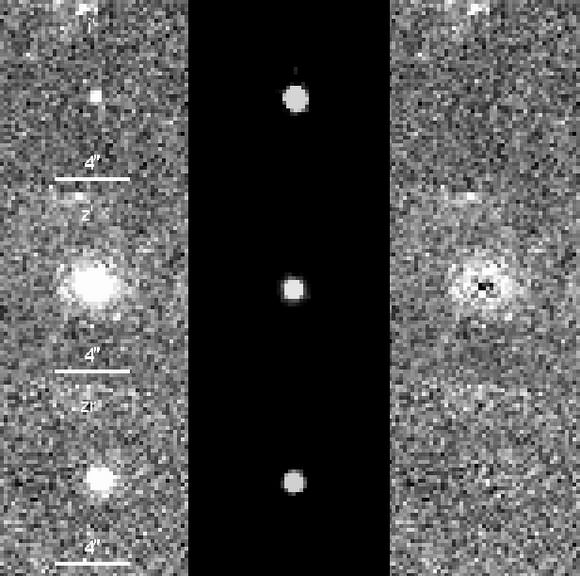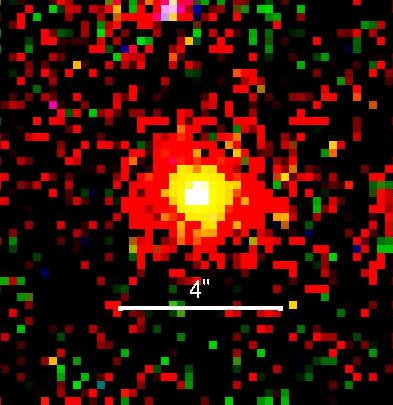[/caption]
A long time ago in a galaxy far, far away there was a supermassive black hole….. Astronomers from the University of Hawaii have spotted a giant galaxy surrounding the most distant supermassive black hole ever found. The galaxy, so distant that it is seen as it was 12.8 billion years ago, is as large as the Milky Way galaxy and harbors a supermassive black hole that contains at least a billion times as much matter as our Sun.
“It is surprising that such a giant galaxy existed when the Universe was only one-sixteenth of its present age,” said Dr. Tomotsugu Goto, “and that it hosted a black hole one billion times more massive than the Sun. The galaxy and black hole must have formed very rapidly in the early Universe.”
Knowledge of the host galaxies of supermassive black holes is important in order to understand the long-standing mystery of how galaxies and black holes have evolved together. Until now, studying host galaxies in the distant Universe has been extremely difficult because the blinding bright light from the vicinity of the black hole makes it more difficult to see the already faint light from the host galaxy.

To see the supermassive black hole, the team of scientists used new red-sensitive Charge Coupled Devices (CCDs) installed in the Suprime-Cam camera on the Subaru telescope on Mauna Kea. Prof. Satoshi Miyazaki of the National Astronomical Observatory of Japan (NAOJ) is a lead investigator for the creation of the new CCDs and a collaborator on this project. He said, “The improved sensitivity of the new CCDs has brought an exciting discovery as its very first result.”
The origin of the supermassive black holes remains an unsolved problem, and this new device and its findings could open a new window for investigating galaxy-black hole co-evolution at the dawn of the Universe.
A currently favored model requires several intermediate black holes to merge. The host galaxy discovered in this work provides a reservoir of such intermediate black holes. After forming, supermassive black holes often continue to grow because their gravity draws in matter from surrounding objects. The energy released in this process accounts for the bright light emitted from the region around the black holes.
A careful analysis of the data revealed that 40 percent of the near-infrared light observed (at the wavelength of 9100 Angstroms) is from the host galaxy itself and 60 percent is from the surrounding clouds of material (nebulae) illuminated by the black hole.
The scientists results will be published in the journal Monthly Notices of the Royal Astronomical Society later in September. Their paper is available here.
Source: RAS


Ought to be interesting when they obtain hi-res imaging or mid-res spectra of the host galaxy. As the authors point out in their paper, IFU spectroscopy of the host galaxy would be highly desirable. Determining the metallicity and internal motions within the host galaxy would be a boon to those studying early galaxy and BH evolution.
time to begin to reevaluate the age of the universe?
The paper states that the galaxy’s redshift is z=6.43.
Is there a predicted maximum redshift for objects like this?
What if Herschel finds some at z=10 or 15?
Would that blow a supermassive black hole in the Big Bang theory?
“What if Herschel finds some at z=10 or 15? Would that blow a supermassive black hole in the Big Bang theory?”
No…. Someone would just invent “dark distance” to go along with the equally incredulous “dark energy.”
The value of z = 7 is about the limit for optically luminous objects like stars. However, z = 1000 (or about) for the radiatino emitted by the plasma during the radiation dominated phase. This corresponds to the dilation of optical radiation to mm or cm radiation in the microwave. This is the CMB. if we ever get around to detecting remnant gravitons from the earliest big bang that would correspond to a z = 10^30.
LC